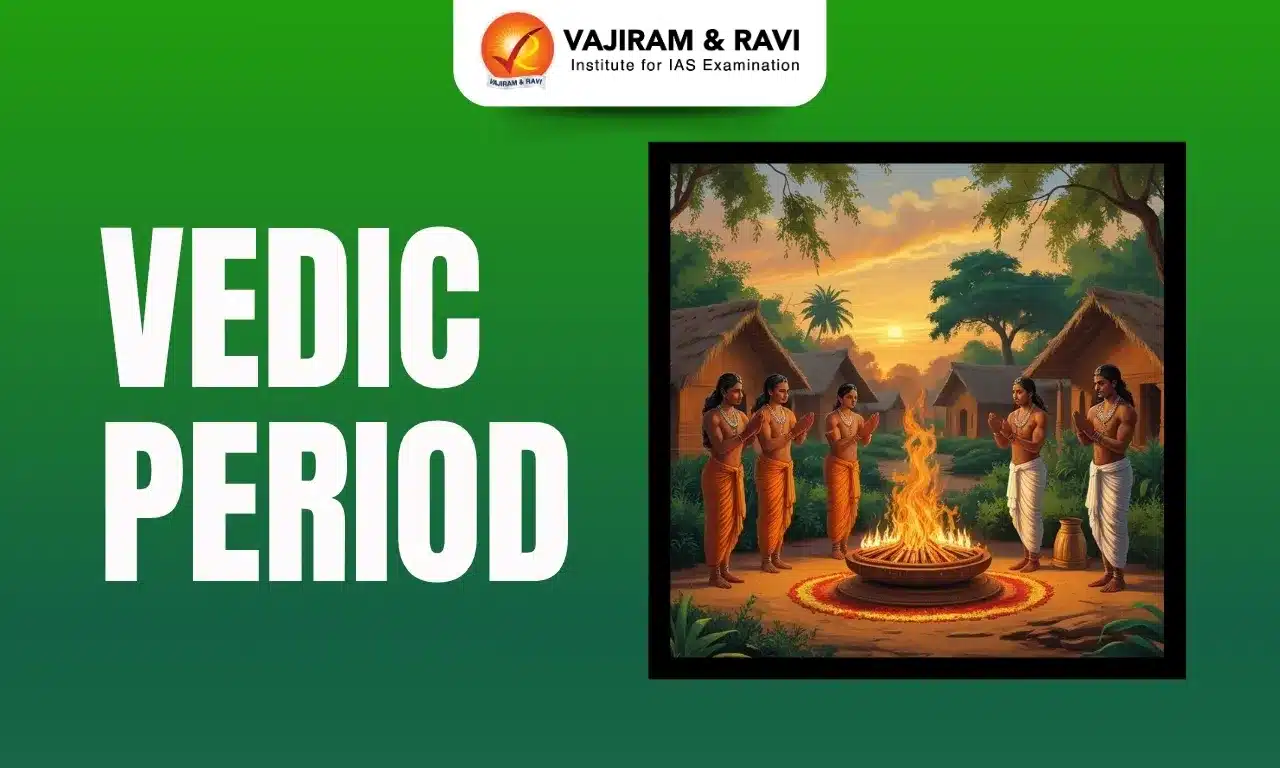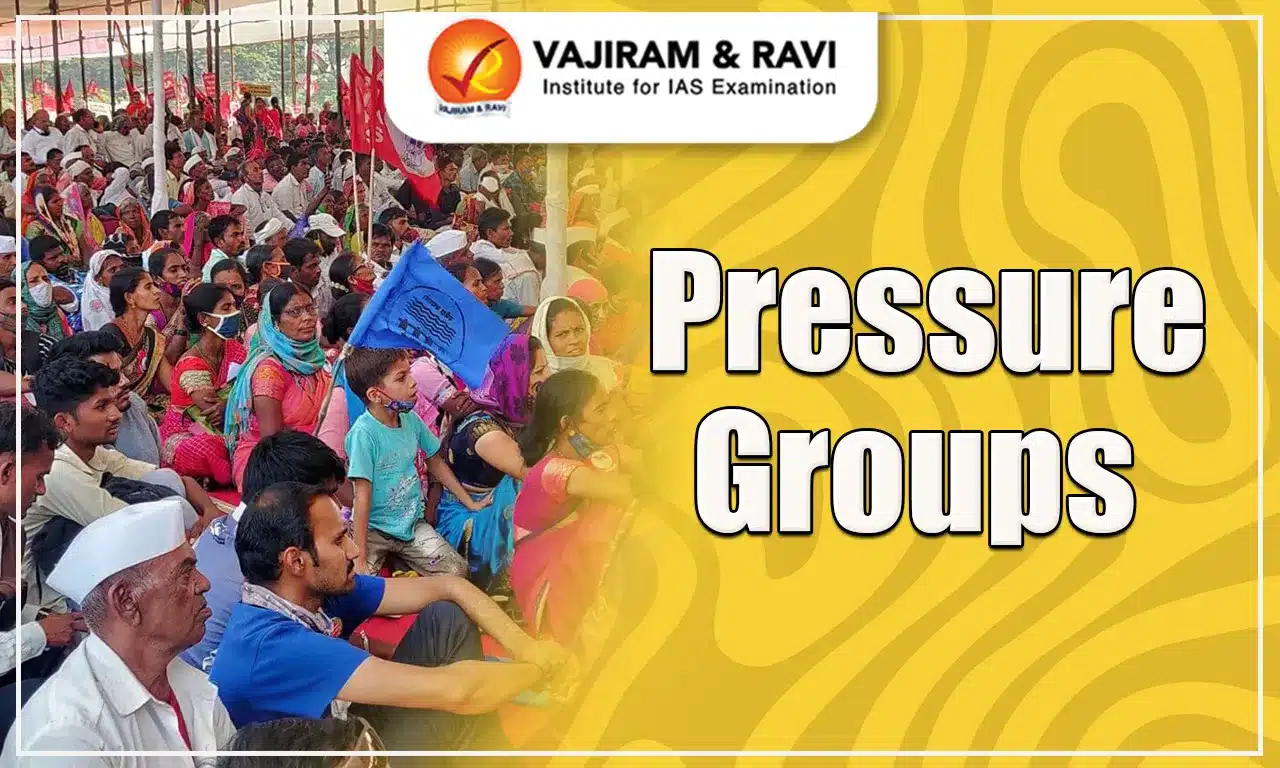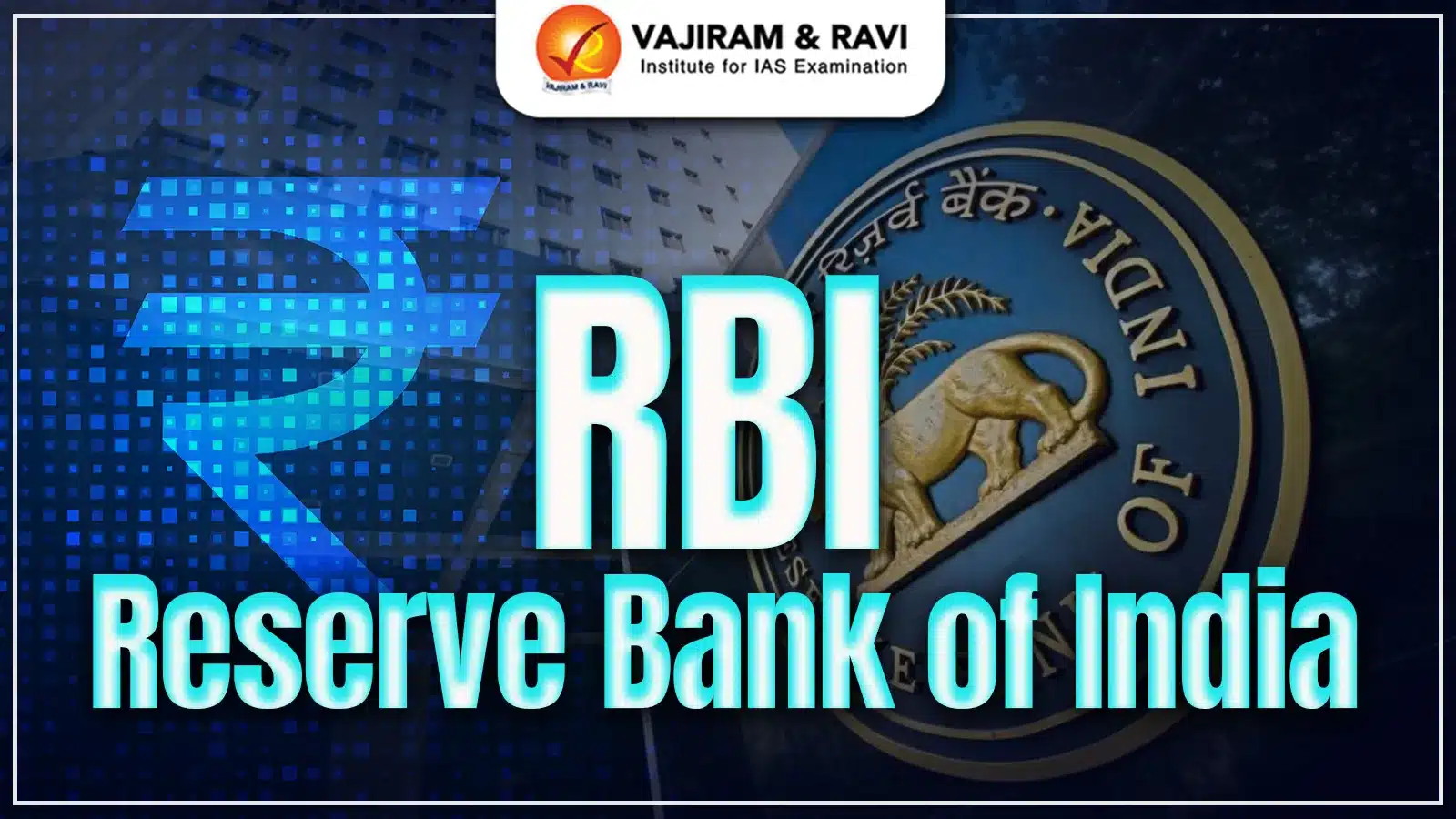The Vedic Civilization, also known as the Vedic culture or the Vedic period, was a complex and varied civilisation that arose in ancient India between 1500 and 600 BCE. It was distinguished by the practice of Vedic religion and the composition of the Vedas, a collection of sacred texts that serve as the foundation of Hinduism.
The Vedas are the source of a remarkable civilisation's integral wisdom, science, tradition, and culture. They are oral compilations of the distilled wisdom of cosmic knowledge that has survived since the beginning of time. They are recognised not only as scriptures but also as the source of Indian culture and human civilisation.
What is Veda?
- The word Veda is derived from the root vid, which means ‘to know’. The term Veda refers to the sacred knowledge contained in the Vedic texts.
- There are four Vedas: Rigveda, Samaveda, Yajurveda, and Atharvaveda.
- These four Vedas are also referred to as 'Samhitas' as they represent the oral tradition of the time.
| The Four Vedas | |
| Rigveda |
- Rigveda is the oldest Veda. - It is divided into ten books (known as mandalas). - It also includes Vishvamitra's famous Gayatri mantra and the Purusha Shukta prayer (the story of Primal Man). - The Rigvedic Priest was known as Hotri. |
| Yajurveda |
- It is essentially a manual for the Adhvaryu priest, who was responsible for almost all ritualistic tasks in a sacrifice. - It is principally in prose form. - It has been divided into two sections: the earlier "black" and the more recent "white". |
| Samaveda |
- The Samaveda is the shortest of all the four Vedas. - The Samaveda is a collection of Rigvedic verses organised in the form of poetry to facilitate singing. - The Samaveda is specially intended for the Udagatar priest. |
| Atharvaveda |
- The Atharvaveda is a compilation of magical spells and charms that are used to ward off evil spirits and diseases. - The Atharva Veda is the latest and contains hymns (some from the Rig Veda). |
Each Veda has four parts: Samhitas, Brahmanas, Aranyakas, and Upanishads.
| Samhitas |
- The Samhitas are the most ancient part of the Vedas. - It contains mantras, prayers, litanies and hymns to God. |
| Brahmanas |
- The Brahmanas are prose interpretations of the Samhita chapters. - It gives details and explanations of sacrificial rituals and their outcome. |
| Aranyakas |
- The Aranyakas are texts on forest life. - It interprets sacrificial rituals in a symbolic and philosophical way. |
| Upanishads |
- There are 108 Upanishads, 13 of which are considered the most significant. - They contain a great variety of philosophical ideas about sacrifice, the body, and the universe. - They are most closely associated with the concepts of Atman and Brahman. |
Who were Vedic Aryans?
The Vedic Aryans were the authors of the Vedic hymns. Aryans were considered a race in the nineteenth century. Originally, the Aryans seem to have lived somewhere in the Steppes stretching from southern Russia to Central Asia.
- A group of them migrated from here to northwest India, where they were known as Indo-Aryans or simply Aryans.
- The Aryans are considered to represent a linguistic group speaking Indo-European languages. They are distinguished by traditional historians and archaeologists from the non-Aryan Harappans of the preceding period.
Migration of Aryans
Archaeologists have made attempts to link various post-Harappan cultures to the Aryans.
The Painted Grey Ware has been repeatedly connected with Aryan craftsmanship.
- The archaeological evidence of migrations comes from the Andronovo Culture, which is located in southern Siberia. In the second millennium BC, this Culture flourished.
- From here, people moved north of Hindukush, and from here, they entered India.
- Development of Aryan Language: The new people came in several batches, and one of the important results of this process of interaction was that the Vedic form of the Aryan language became predominant in the entire Northwestern India.
- The texts written in this language are popularly known as the Vedic Texts.
Geographical Horizons of Vedic Aryans
- The early Vedic Aryans lived in the area known as sapta-sindhu, meaning an area of seven rivers.
- This corresponds to the entire Punjab and its neighbouring Haryana regions, but Rigvedic geography also included the Gomal plains, southern Afghanistan, and southern Jammu and Kashmir.
- The seven rivers included:
- Sindhu,
- Vitasta (Jhelum),
- Asikni (Chenab),
- Parushni (Ravi),
- Vipash (Beas),
- Shutudri (Sutlej),
- Sarasvati.
- During the Later Vedic period, they gradually moved eastward and came to occupy eastern U.P. (Kosala) and north Bihar (Videha).
Vedic Period (1500-600 BC)
In terms of literature, as well as social and cultural evolution, Vedic texts reflect two stages of development.
- The Rigvedic period, also known as the Early Vedic period, corresponds to the time when the Rigvedic hymns were composed, which was between 1500 BC and 1000 BC.
- The later stage, known as the Later Vedic period, is placed between 1000 BC and 600 BC.
Sources of the Early Vedic Period
- Literary Sources: literary sources refer to the four Vedas: Rigveda, Samaveda, Yajurveda and Atharvaveda. Out of these, the Rigveda is the earliest text.
- The Rigvedic Samhita consists of up to ten books or 'Mandalas,' with books II to VII considered to be the earliest and belonging specifically to the Early Vedic Phase.
- Archaeological Sources: Excavations conducted in Punjab, Uttar Pradesh, and northern Rajasthan, along the Indus and Ghaggar rivers over the last 40 years, have unearthed many post-Harappan/Chalcolithic settlements from these regions.
Sources of the Later Vedic Period
- Literary Sources: Books I, VIII, IX and X are considered later additions to the Rigvedic Samhita. The other Vedic texts assigned to the Later Vedic phase are the later additions, particularly the 10th Mandala of the Rigveda Samhita and the Samaveda, Yajurveda, and Atharvaveda Samhitas.
- Archaeological Sources: The literary sources repeatedly refer to the areas of Western U.P., Haryana and Rajasthan.
- The Rigveda mentions "ayas," which might be referring to iron; however, archaeological evidence links iron to the Later Vedic period.
Political Life of the Vedic Period
There is no well-defined political hierarchy in the Early Vedic setup; however, changes during the period gave rise to a socio-political hierarchy, which manifested itself in the origin of the Varna system during the 'Later Vedic phase'. Early Vedic society was largely egalitarian and governed by tribal values and norms.
| Features | Political Life of the Early Vedic Period | Political Life of Later Vedic Period |
| Social Unit | - The Aryans' chief social unit was known as Jana. |
- The concept of janapada emerged. - In the Later Vedic texts, the word Rashtra was also used for the first time. |
| Chief/King | - Jana was headed by Rajan, whose main function was to protect the Jana and cattle from the enemies. | - The Rajan, or chief, now assumed the role of protector of the territory where his tribesmen had settled. |
| Post of Chief | - Not Hereditary and tribal assemblies were involved in the selection of the raja from amongst the clansmen. | - Hereditary and elaborate coronation rituals, such as vajapeya and rajasuya, established the chief authority. |
| Administration |
- Rajan was helped in his task by the tribal assemblies called sabha, samiti, vidatha, gana and parishad, which are mentioned in the Rigveda.
|
- During this time, the sabha overtook the samiti in relevance.
|
| Taxes |
- The people gave the chief what is known as Bali. - It was simply a voluntary contribution made on special occasions by ordinary tribesmen. |
- Bali, Bhaga and Shulka gradually assumed the form of regular tributes and taxes. |
| Army | - The Sena, or army, was a temporary fighting force made up of able-bodied tribesmen who were mobilised during wartime. | - A rudimentary army emerged, and all these lived on the taxes offered by the people. |
| Status of Brahmins |
- The clans held large yajnas or sacrifices, which were performed by Purohita. - They received a large portion of the rajas' gifts and assumed a superior position in comparison to the other members of the clan. |
- As Rajanya's importance grew, so did the Brahmanas. - The status of the officiating priests became at par with the gods in the later period. - The officiating brahmana had to be satisfied with Dana. |
Social Life of the Vedic Period
The Early Vedic Period social structure, which was based on clan relations and was largely egalitarian, became much more complex in the later Vedic period. The early Vedic society was not divided on the basis of caste, while later, Vedic society was divided on the basis of the Varna system.
| Features | Social Life of Early Vedic Period | Social Life of Later Vedic Period |
| Family |
- The family belonged to a larger group known as a vis or clan. - One or more than one clan made Jana or tribe. - The Jana was the largest social unit. |
- The family continues to be the fundamental unit of Vedic society. - With three or four generations living together, the later Vedic family grew large enough to be called a joint family. |
| Varna System | - There was no varna system in the early Vedic period. | - Four Varnas: The four varnas that came to divide society were the Brahmanas, Kshatriyas, Vaishyas, and Shudras. |
| Status of Women |
- Despite the patriarchal nature of society, women played an important role in it. They had been educated and were entitled to the assemblies. - Women poets: Apala, Viswavara, Ghosa, and Lopamudra. - They were free to choose their partners and could marry whenever they wanted. |
- They were considered subordinate to men and were not involved in any major decision-making. - Their participation in public meetings was restricted. - Child marriages were becoming more common. |
| Varna-Ashrama | - No such system was prevalent during the early Vedic period. |
- The texts mention three stages of life: Brahmacharya (student life), Grihastha (householder life), and Vanaprastha (hermitage). - Later on, sanyasa, the fourth stage, was added. - Together with varna, it came to be known as varna-ashrama dharma. |
| Tribal Conflicts |
- The growing need for more pasture lands and cattle contributed to an increase in inter and intra-tribal conflicts and warfare. - Inter-tribal conflicts were frequent, an example being the battle of the Ten Kings mentioned in the Rigveda. |
- The nature of intra-tribal conflicts and conflicts within tribes also changed. - Fights were now for the acquisition of land. |
| Gotra System | - In early Vedic society, no such system was prevalent. | - Gotra developed in this means that people having a common gotra descended from a common ancestor, and no marriage between the members of the same gotra could take place. |
| Marriage | - Marriage was typically monogamous, but chiefs occasionally practised polygamy. | - Despite the prevalence of polygamy, monogamous marriages were preferred. |
| Social Groups |
- Occupation was not based on birth. - Varna, or colour, was used to distinguish between Vedic and non-Vedic people. |
- The division of social groups was based on occupation alone, and society was still flexible, where one's occupation did not depend on birth. |
Religious Life of the Vedic Period
The hymns of the Rigveda reflect the religious ideas of the Vedic people. They revered the natural forces around them (such as wind, water, rain, thunder, fire, and so on) over which they had no control and invested nature with divinity conceived in human forms.
| Features | Religious Life of Early Vedic Period | Religious Life of Later Vedic Period |
| Rigvedic Gods |
- Indra, Agni, Varuna, Mitra, Dyaus, Pushana, Yama, Soma, etc are all male gods. - Many goddesses, such as Ushas, Sarasvati, and Prithvi, hold secondary positions in the pantheon. - The most frequently mentioned god in the Rigveda is Indra. |
- Vishnu and Rudra, who were minor deities in the Rigveda, rose to prominence. - Pushan, who used to protect cattle, became the Shudra god. |
| Yajnas |
- In sacrifices, hymns and prayers were recited, and these yajnas were typically performed by priests. - The sacrificial ritual also resulted in the expansion and development of knowledge of mathematics and animal anatomy. |
- Important yajnas included ashvamedha, vajapeya, and rajasuya. - Toward the end of this period, a strong reaction against priestly dominance over the complexities of the yajnas led to the formulation of a philosophical doctrine that is laid out in the Upanishads. |
Economic Life of the Vedic Period
The Rigvedic hymns provide vast evidence of the significance of cattle in Vedic society.
- The word "gau," which means "cow," is the root of many other words.
- Cattle were the primary measure of wealth, and a wealthy man who owned many cattle was referred to as a "gomat."
- Conflicts and battles were referred to as gavishti, gavesana, gavyat, and other terms during this time period.
- The raja, or chief, is known as the 'gopati,' or one who protects cows.
- “Godhuli’’ is a term used in the Rigveda for a measure of time.
- Distance is called gavyuti.
- A daughter is referred to as a duhitri, or one who milks the cows.
- Kinship units are labelled as gotra.
| Features | Economic Life of the Early Vedic Period | Economic Life of Later Vedic Period |
| Occupational Activity | - The dominant occupational activity in pastoral society was cattle rearing. | - Transformation from a pastoral to a sedentary agrarian society. |
| Agriculture |
- There are no other grains mentioned along with 'Yava' or barley. - Shifting agriculture was practised. |
- Rice was the staple diet of the people. Rice is mentioned in the Vedic texts as Vrihi, Tandula, and Sali. - It appears that during this period, double cropping was also practised. - Aside from barley, people started growing wheat, rice, pulses, lentils, millet, sugarcane, and other crops. |
| Domestication of animals | - Cattle, sheep, goats, and horses were raised for milk, meat, and hides. |
- The buffalo had been domesticated for agricultural purposes. - During this time, the God Indra was given the title "Lord of the Plough." |
| Taxes |
- The people gave the chief what was known as Bali, which was simply a voluntary contribution made by ordinary tribesmen on special occasions. - There was no officer mentioned for tax collection. |
- Bali, Bhaga and Shulka gradually assumed the form of regular tributes and taxes. - Bhagalugha: Tax collecting officer. |
| Iron Technology | - They did not use iron technology and were familiar with copper. | - Socketed axes made of iron and iron-tipped ploughshares and hoes increased the efficiency of agriculture. |
| Medium of Exchange |
- Cows were the most popular means of exchange. - Priests were compensated with cows, horses, and gold ornaments for performing sacrifices. |
- In the later times, gold coins called Niskha were used in transactions. |
Last updated on November, 2025
→ Check out the latest UPSC Syllabus 2026 here.
→ Join Vajiram & Ravi’s Interview Guidance Programme for expert help to crack your final UPSC stage.
→ UPSC Mains Result 2025 is now out.
→ UPSC Notification 2026 is scheduled to be released on January 14, 2026.
→ UPSC Calendar 2026 is released on 15th May, 2025.
→ The UPSC Vacancy 2025 were released 1129, out of which 979 were for UPSC CSE and remaining 150 are for UPSC IFoS.
→ UPSC Prelims 2026 will be conducted on 24th May, 2026 & UPSC Mains 2026 will be conducted on 21st August 2026.
→ The UPSC Selection Process is of 3 stages-Prelims, Mains and Interview.
→ UPSC Result 2024 is released with latest UPSC Marksheet 2024. Check Now!
→ UPSC Prelims Result 2025 is out now for the CSE held on 25 May 2025.
→ UPSC Toppers List 2024 is released now. Shakti Dubey is UPSC AIR 1 2024 Topper.
→ UPSC Prelims Question Paper 2025 and Unofficial Prelims Answer Key 2025 are available now.
→ UPSC Mains Question Paper 2025 is out for Essay, GS 1, 2, 3 & GS 4.
→ UPSC Mains Indian Language Question Paper 2025 is now out.
→ UPSC Mains Optional Question Paper 2025 is now out.
→ Also check Best IAS Coaching in Delhi
Tags: quest vedic period


















